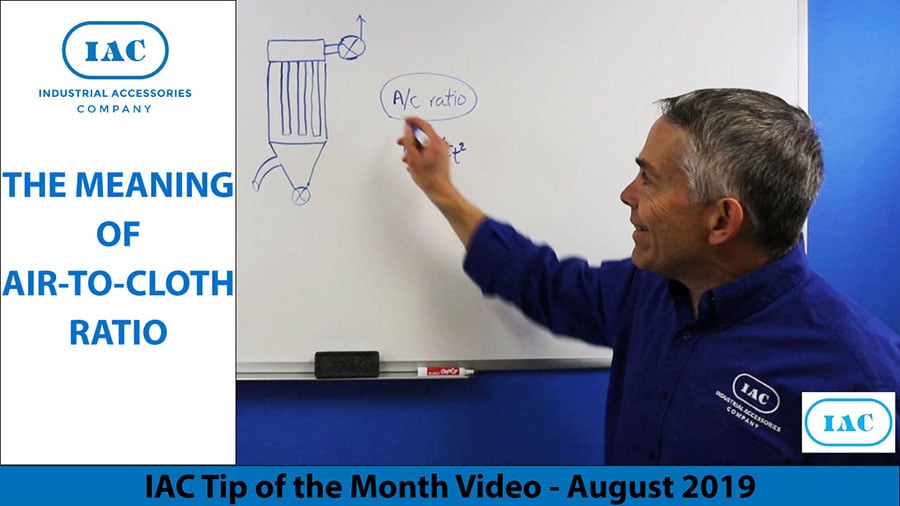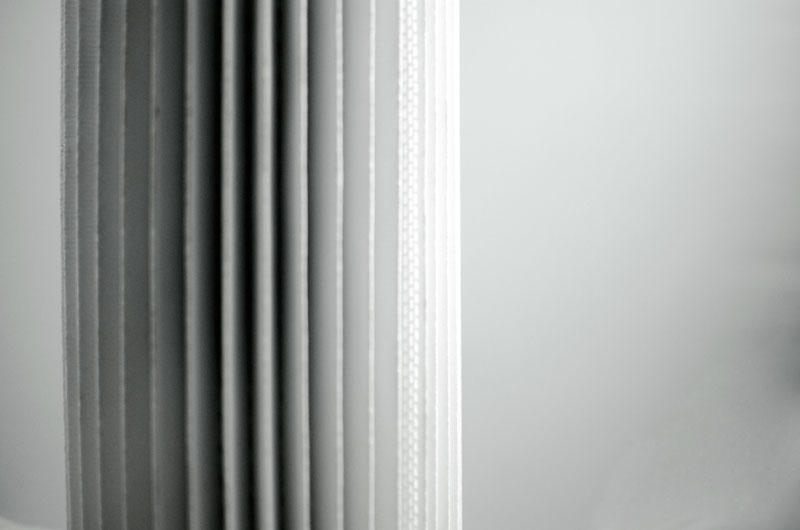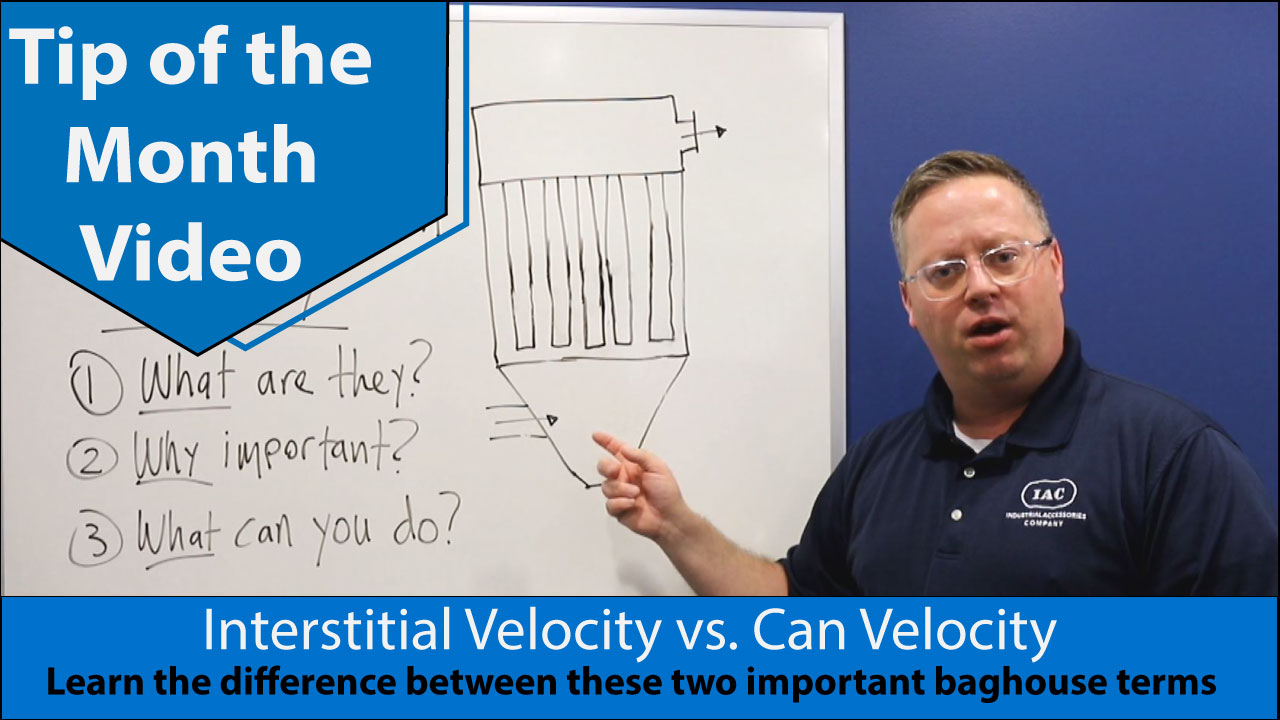The Meaning of Air-to-Cloth Ratio in Baghouse Design

IAC Applications Engineering Manager Luis Castano is back with another Tip of the Month for baghouse design. In this month’s tip, Luis explains the meaning of air-to-cloth ratio in optimized baghouse design, and its relation to both air velocity going through the filters, and interstitial air velocity going between the bags. All three parameters are important to consider in order to have your baghouse operating at peak efficiency.
Simply adding more more filtration area, such as when changing from traditional filter bags to pleated filters, without considering all these factors won’t make your dust collection system operate at maximum efficiency. Proper calculation of all these parameters can get complicated, and IAC is here to help. Call us to discuss your application before changing to pleated filters or making any other changes, and IAC’s team of baghouse experts will gladly analyze your dust collection system and offer solutions that will maximize filtration and baghouse life while minimizing expense.
The Meaning of Air-to-Cloth Ratio in Baghouse Design Video Transcript:
Hi, I’m Luis Castano with IAC’s two-minute Tip of the Month. In dust collector discussions, the term air-to-cloth ratio comes up frequently. Today I want to clarify what that means. Air-to-cloth ratio is the most important parameter in designing a baghouse, and that’s usually what people look at. Yes, as a rule-of-thumb the lower the better, but we need to keep an eye on the other velocity that’s important in dust collector design. Usually we just focus on air-to-cloth ratio.
So what is air-to-cloth ratio? When we look at it, it is CFM per square feet. I don’t want to get too much into the math, but this if we look at what it represents – cubic feet per minute per square foot – if we do the math this is units of velocity, so I find it a lot easier to picture velocity, and what is it then? Air-to-cloth ratio? CFM per square foot? It is actually velocity going through the filters.
It’s this velocity [air flow through the filter material], and the lower the better. The baghouse cleans better, it filters better, and yes, true, the lower the better, but there’s another parameter that we need to keep an eye on, and that is the interstitial velocity that goes between the filter bags. Those two go hand-in-hand. Sometimes it’s actually better to reduce the length of the filters in half the baghouse to lower the interstitial velocity.
I know it gets a little involved and complicated, but that’s why I want to welcome you to call us and discuss your application because we can not just blindly put more filtration area to lower the air-to-cloth without looking at the effects of that on the interstitial velocity.
So feel free to give us a call and discuss your application, especially if you are going to pleats, and we can find a solution for you. Thank you!



